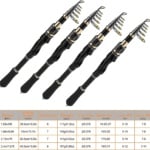Imagine driving on a foggy morning, where visibility is reduced to a mere few feet ahead. It’s a situation that can leave even the most confident drivers feeling uncertain and anxious. In this article, we will provide you with practical tips on how to handle and navigate through foggy or reduced visibility conditions. By following these simple yet effective strategies, you can ensure your safety and that of others on the road. So, buckle up and let’s steer our way through the misty unknown!
Understanding Foggy or Reduced Visibility Conditions
What is foggy or reduced visibility conditions?
Foggy or reduced visibility conditions occur when the level of visibility on the road is significantly reduced due to the presence of fog, mist, rain, snow, or other atmospheric conditions. This can make it difficult for drivers to see clearly, increasing the risk of accidents and making navigation more challenging.
Causes of foggy or reduced visibility conditions
There are several factors that can contribute to foggy or reduced visibility conditions. These include weather patterns such as dew point, temperature, wind direction, and humidity levels. Fog can form when warm air passes over a cool surface, causing it to cool and condense, resulting in the formation of water droplets suspended in the air. Other factors that can cause reduced visibility include smoke, dust, pollution, and certain geographical features like valleys or bodies of water.
Dangers and challenges posed by fog or reduced visibility
Foggy or reduced visibility conditions present numerous dangers and challenges for drivers. One of the main risks is decreased visibility, which can make it difficult to see other vehicles, pedestrians, road signs, and obstacles on the road. This increases the likelihood of accidents and can lead to more severe collisions, as drivers may not have enough time to react or take evasive action. Additionally, reduced visibility can also affect traffic flow and increase congestion, leading to delays and frustration for motorists.
Preparing for Foggy or Reduced Visibility Conditions
Check weather forecasts
Before setting out on a journey, it’s crucial to check the weather forecasts for the duration of your trip. Pay particular attention to any fog or reduced visibility warnings issued by local weather agencies. This information will give you advance notice of the conditions you can expect to encounter, allowing you to prepare accordingly and adjust your travel plans if necessary.
Plan your route
When foggy or reduced visibility conditions are forecasted, it is advisable to plan your route in advance. Consider alternative routes that may have less fog or traffic congestion. This can help you avoid areas known for frequent fog occurrences or provide alternative options if conditions worsen during your journey. It is also a good idea to inform someone about your intended route and estimated time of arrival, especially if you are traveling alone in challenging conditions.
Ensure proper vehicle maintenance
Before driving in foggy or reduced visibility conditions, it is essential to ensure that your vehicle is in optimal condition. Regular vehicle maintenance, including checking the tires, brakes, and headlights, is crucial for safe driving in any weather conditions. Make sure your windshield wipers are functioning properly and that your defrosters are working effectively to keep the front and rear windshields clear of fog or condensation. Remember, maintaining your vehicle’s visibility-enhancing features is essential in foggy or reduced visibility conditions.
Driving Techniques in Foggy or Reduced Visibility Conditions
Reduce speed and increase following distance
One of the most important driving techniques in foggy or reduced visibility conditions is to reduce your speed. By slowing down, you have more time to react to any potential hazards, allowing you to take appropriate action to avoid collisions. Additionally, increasing your following distance is crucial to ensure you have enough time to stop if the vehicle in front suddenly brakes. Maintain a safe distance by using the “three-second rule,” where you leave at least a three-second gap between your vehicle and the one in front.
Use fog lights and low beam headlights
When driving in foggy or reduced visibility conditions, it is essential to use your vehicle’s fog lights and low beam headlights. Fog lights are specifically designed to cut through fog and illuminate the road surface directly in front of your vehicle. Low beam headlights provide improved visibility without reflecting off the fog or rain as excessively as high beam headlights. Never use your high beam headlights in foggy conditions, as the light will reflect back, creating glare and reducing your visibility further.
Stay focused and minimize distractions
Maintaining focus and minimizing distractions is crucial when driving in foggy or reduced visibility conditions. Eliminate any unnecessary distractions inside your vehicle, such as loud music, eating, or using your mobile phone. Keep your attention focused on the road ahead and continuously scan for any potential hazards, other vehicles, or pedestrians. Staying alert and engaged will help you react quickly and make split-second decisions if needed.
Enhancing Visibility in Foggy or Reduced Visibility Conditions
Use windshield wipers and defrosters
To enhance visibility in foggy or reduced visibility conditions, it is essential to use your windshield wipers and defrosters effectively. Ensure that your windshield wipers are in good working condition and replace them if they are worn or ineffective. Use the appropriate wiper speed for the level of rainfall or mist on your windshield. Additionally, use your defrosters to keep your front and rear windshields clear of fog or condensation. This will provide a clear line of sight, enabling you to see the road and any potential hazards more clearly.
Keep windows clean and clear
Dirty or foggy windows can significantly impair your visibility in foggy or reduced visibility conditions. Before starting your journey, clean all your windows and mirrors thoroughly, both on the inside and outside of the vehicle. Additionally, use a microfiber cloth or a defogging agent to prevent fogging on the inside. Keeping your windows clean and clear will help you have a better view of the road, enabling you to react quickly and safely to any potential hazards.
Avoid high beams and unnecessary vehicle lights
In foggy or reduced visibility conditions, it is crucial to avoid using your high beam headlights. High beams reflect off fog or mist particles, creating glare and reducing visibility for both you and other drivers. Instead, use your low beam headlights, fog lights, and the road markings or reflective devices as your references for navigation. It is also advisable to avoid using any unnecessary lights inside your vehicle, as they can create reflections on your windshield, further hindering your visibility.
Safety Measures and Precautions in Foggy or Reduced Visibility Conditions
Always wear your seatbelt
Wearing your seatbelt is crucial in any driving situation, but it is especially important in foggy or reduced visibility conditions. Buckling up not only protects you in the event of a collision but also helps to keep you positioned correctly in your seat, ensuring that you maintain control of the vehicle during sudden maneuvers or unexpected hazards. Make it a habit to always wear your seatbelt and ensure that all passengers are properly restrained as well.
Use turn signals and reduce lane changes
In foggy or reduced visibility conditions, it is essential to communicate your intentions to other drivers on the road. Always use your turn signals well in advance of any maneuver to give drivers behind you ample time to react. Reduce your lane changes and avoid unnecessary weaving through traffic. Staying in a consistent lane and conservatively changing lanes only when necessary will help minimize the chances of sudden lane-change collisions.
Listen for traffic sounds
When visibility is significantly reduced, it is essential to rely on other sensory cues to detect the presence of other vehicles or potential hazards. Keep your windows cracked slightly to listen for traffic sounds, such as engine noise or the sound of approaching vehicles. Listening attentively can provide you with additional information about the traffic around you, especially in situations where the visibility is extremely limited.
Interacting with Other Road Users in Foggy or Reduced Visibility Conditions
Maintain visibility with other vehicles
In foggy or reduced visibility conditions, it is crucial to maintain visibility with other vehicles on the road. Keep your headlights on, even during the daytime, to make your vehicle more conspicuous. Avoid tailgating other vehicles and provide ample following distance to allow drivers behind you to see your vehicle clearly. Use your turn signals early and consistently to alert other drivers of your intentions, and ensure that your brake lights are functioning properly.
Use caution at intersections and stoplights
Intersections and stoplights can be particularly hazardous in foggy or reduced visibility conditions. Exercise extreme caution when approaching intersections and be prepared to stop if necessary. Reduce your speed well in advance and make sure to look for any other vehicles or pedestrians before proceeding. Treat all stoplights as though they are flashing red lights, and ensure that it is safe to proceed before crossing the intersection.
Be aware of pedestrians and cyclists
In foggy or reduced visibility conditions, it is essential to be extra vigilant for pedestrians and cyclists. Due to reduced visibility, pedestrians and cyclists may also struggle to see approaching vehicles, increasing the risk of accidents. Keep a lookout for any pedestrians or cyclists on or near the road, and give them ample space when passing. Slow down and be prepared to stop if you encounter pedestrians or cyclists, as their visibility may be just as limited as yours.
Using Navigation Tools and Assistance Systems in Foggy or Reduced Visibility Conditions
Utilize GPS or navigation apps
Using a GPS device or navigation app can provide you with valuable information and guidance in foggy or reduced visibility conditions. By inputting your destination, you can benefit from real-time updates on traffic conditions, road closures, and alternative routes. Utilize the audio guidance feature to receive spoken instructions instead of constantly looking at the screen. Remember to keep the volume at a reasonable level, allowing it to be heard clearly without distracting you from your surroundings.
Follow road signs and markers
Navigating through foggy or reduced visibility conditions requires increased reliance on road signs and markers. Pay close attention to road signs, such as speed limits, lane markings, and directional arrows. The reflective properties of road signs and markers can make them more visible in foggy conditions. Follow the guidance provided by these signs and markers to ensure you stay on the correct route and navigate safely.
Consider using road weather information systems
Road weather information systems (RWIS) can provide real-time data on weather conditions, road surface temperatures, and visibility at various points along your route. These systems utilize sensors embedded in the road surface to gather data, which is then transmitted to a central monitoring system. Utilizing RWIS information can help you make informed decisions about the best times to travel and which routes to take, based on current weather and visibility conditions.
Taking Breaks and Making Safe Decisions in Foggy or Reduced Visibility Conditions
Find a safe place to pull over
If the fog or reduced visibility becomes extremely challenging to drive in, it is crucial to find a safe place to pull over. Look for designated rest areas, parking lots, or emergency pull-off areas where you can safely park your vehicle. If necessary, pull onto the shoulder of the road, ensuring that you are as far away from traffic as possible. Turn on your hazard lights to alert other drivers of your presence and wait for the fog to lift or visibility to improve before continuing your journey.
Assess the conditions and visibility
Before making any decisions about continuing to drive in foggy or reduced visibility conditions, take a moment to assess the conditions and visibility. Look out for any changes in the intensity of the fog, the presence of rain or snow, or any improvements in visibility. Consider if it is safe to continue driving or if it would be wiser to wait until conditions improve. If you have any doubts about your safety or ability to navigate effectively, it is better to err on the side of caution and delay your journey.
Consider alternative transportation options
In extreme foggy or reduced visibility conditions, it may be advisable to consider alternative transportation options. This could include delaying your journey, utilizing public transportation, or arranging for a ride with a friend or family member. In situations where visibility is severely limited and it is unsafe to drive, it is essential to prioritize your safety and the safety of others on the road. Explore alternative transportation options and avoid putting yourself and others at risk.
Emergency Situations and Unexpected Hazards in Foggy or Reduced Visibility Conditions
Dealing with sudden obstacles or hazards
In foggy or reduced visibility conditions, it is essential to be prepared for sudden obstacles or hazards that may appear on the road. Reduce your speed and scan the road ahead continuously. Look out for brake lights or sudden changes in traffic patterns as indicators of potential hazards. If you encounter an unexpected obstacle, such as a fallen tree or debris on the road, reduce your speed further and maneuver around it if it is safe to do so. If necessary, stop and warn other drivers by turning on your hazard lights before proceeding with caution.
Responding to emergencies and collisions
In the event of an emergency or collision in foggy or reduced visibility conditions, it is crucial to respond quickly and appropriately. If you witness an emergency situation on the road, such as a car accident or a vehicle in distress, pull over to a safe location and contact emergency services immediately. Stay on the line to provide accurate information about the location and nature of the emergency. If you are involved in a collision, move your vehicle to a safe location if possible and follow the necessary procedures, such as exchanging information with the other party involved and reporting the incident to the appropriate authorities.
Contacting emergency services if needed
If you find yourself in a situation where emergency services are required in foggy or reduced visibility conditions, do not hesitate to call for help. Dial the emergency services number (such as 911 in the United States) and calmly provide them with your exact location and a detailed description of the situation. If possible, stay near your vehicle or in a safe location until help arrives.
Post Foggy or Reduced Visibility Conditions Maintenance and Care
Check your vehicle for damage
After driving in foggy or reduced visibility conditions, it is important to check your vehicle for any damage. Inspect the exterior for any dents, scratches, or damage that may have occurred during the journey. Pay close attention to the headlights, fog lights, and other visibility-enhancing features to ensure they are still functioning correctly. Additionally, inspect the windshield and windows for any chips, cracks, or damage that could hinder your visibility in future journeys.
Inspect tires and brakes
Check your tires and brakes for any signs of wear or damage caused by driving in foggy or reduced visibility conditions. Adequate tire tread depth is essential for maintaining traction on wet or slippery roads. Ensure that your tires have sufficient tread and are properly inflated. Additionally, have your brakes inspected to ensure they are functioning optimally, as they are crucial for safe driving in any weather conditions.
Take necessary steps for personal well-being
Driving in foggy or reduced visibility conditions can be mentally and physically demanding. Take the time to rest and recuperate after navigating through challenging weather conditions. Stay hydrated and nourished to maintain your alertness and concentration. If you experienced increased stress or anxiety during your journey, consider engaging in stress-relieving activities or seeking support from loved ones. Prioritizing your personal well-being after driving in foggy or reduced visibility conditions is essential for safe and responsible driving practices.
In conclusion, navigating through foggy or reduced visibility conditions requires specific precautions and driving techniques to ensure safety on the road. By understanding the causes and dangers of these conditions, preparing adequately, utilizing proper driving techniques, and taking necessary safety measures, drivers can reduce the risks associated with reduced visibility and arrive at their destinations safely. Remember to always prioritize personal safety and make informed decisions when faced with challenging weather conditions.





